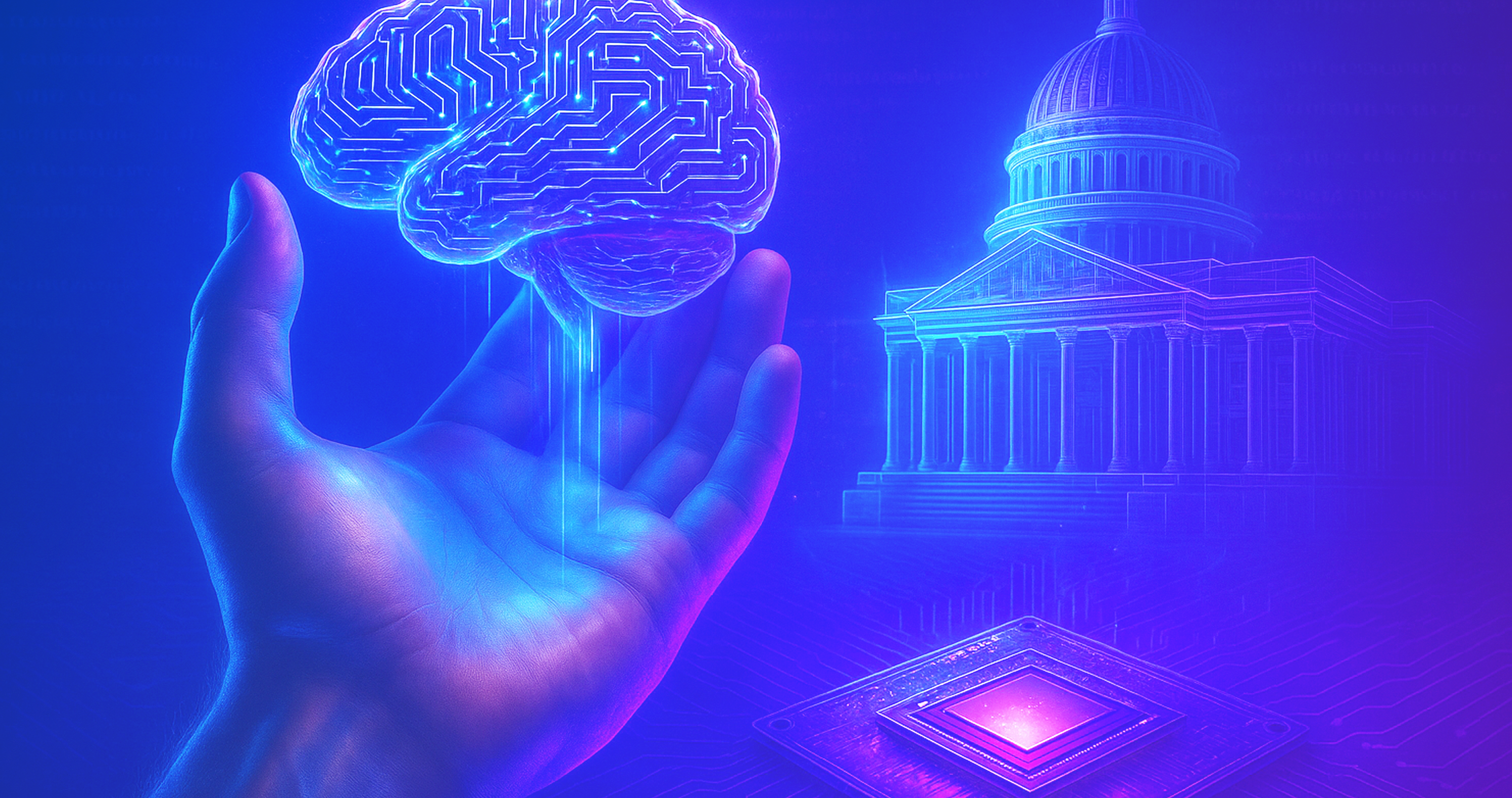Table of contents
AI workloads are not your regular “business operations”. They contain sensitive data, proprietary models and outputs that directly influence business decisions. Yet most cloud platforms still treat them like any other workload with shared environments and general-purpose security.
That mismatch creates real risk. Protecting AI means rethinking how we secure the cloud it runs on. Continue reading as we break down what makes AI cloud security different and why your models can’t afford to go unprotected.
Why Your AI Cloud Security Matters
AI has become central to enterprise strategy. It is helping companies maintain a competitive advantage. But with this shift comes a serious risk.
If you're working with:
- Sensitive customer data (health records, financial data, PII)
- Proprietary models you’ve spent time and money training or fine-tuning
- Strict regulatory requirements like GDPR, HIPAA or ISO 27001
- Inference outputs tied to decision-making or user behaviour
- High-trust industries like healthcare, finance, defence or AI SaaS
Then you cannot rely on traditional cloud protection alone.
Why?
Because AI workloads are not just code. They are valuable IP, built on sensitive data running in complex pipelines. Hence demand a different level of security. The thing is, traditional cloud platforms were not built with this in mind. They were made for general workloads, not for something as sensitive or demanding as AI.
Now, let’s break down what exactly makes AI cloud security different and why your models depend on it.
What is Traditional Cloud Security Built For?
Starting with basics, traditional cloud security was built to support a broad range of workloads: websites, databases, containerised apps and virtual machines. It works well for these use cases because the risks are well understood and the protections are kind of standardised.
A typical traditional cloud setup includes:
-
Encryption at rest and in transit to protect data during storage and transfer
-
Shared tenancy with logical separation to host multiple customers on the same hardware, separated by software-level controls
-
Generic compliance frameworks like ISO 27001 or PCI-DSS to cover regulatory checkboxes for most enterprise workloads
But here’s the problem: AI workloads don’t behave like traditional applications and they carry very different risks.
Why Traditional Security Falls Short for AI
Running AI models, especially proprietary or regulated ones on traditional cloud infrastructure exposes you to risks that standard protections weren’t built to handle:
- Multitenancy risks: Shared environments can expose users to side-channel attacks, where malicious actors attempt to infer data or model behaviour through memory or GPU activity. However, this isn’t always the case, many multitenant systems are built with strong isolation mechanisms that effectively mitigate such risks.
- No model-level protection: Traditional security stops at the system level, leaving your model’s weights, checkpoints and data exposed during training or inference.
- Inference theft: Insecure endpoints make it easy for attackers to extract or clone your model using only API access.
- Opaque subprocessors: Complex subprocessor chains make it hard to trace who can access your data or where it’s being handled.
What is AI Cloud Security Built For
AI workloads demand a lot more. They involve proprietary models, sensitive training data and inference outputs that directly impact decisions. That’s why traditional, infrastructure-focused security doesn’t go far enough.
To protect AI, you need model-centric security, a system built specifically around the risks and requirements of AI workflows. Model-centric security treats your AI not as “just another workload” but as the crown jewel of your business. Because that’s exactly what it is.
Here’s what that looks like:
-
Isolated environments: No shared tenancy. Your model and data run in fully isolated environments to eliminate the risk of side-channel leaks and tenant interference.
-
Sovereignty: Workloads stay within specified regions, critical for GDPR, HIPAA, and national compliance requirements. For EU/UK organisations, this means full control and no foreign access.
-
GPU-accelerated, secure-by-design architecture: Purpose-built GPU clusters designed for AI, not just for performance, but also for secure training, fine-tuning and inference at scale.
-
Protection at the model level: Security goes beyond the operating system. It includes safeguards against model checkpoint leaks, API-level abuse, and inference theft, whether during deployment or runtime.
-
Full auditability and access control: Every action is logged. Every access is traceable. You stay in control of who touches your data, model and infrastructure.
Why You Should Not Ignore This
Your AI models are an asset. And failing to secure them can have serious consequences. Here’s what’s at stake:
- Model IP leakage = lost advantage
If your proprietary model is exposed, you lose the very edge you’ve invested in, giving competitors or attackers access to your core IP.
- Regulatory non-compliance = serious penalties
Sensitive data tied to your models (PII, health records, financial information) must meet strict standards like GDPR, HIPAA or ISO 27001. One misstep can result in costly fines or legal action. To give you an idea, you could face a whopping fine of up to 20 million euros or for an undertaking, up to 4% of your total global turnover from the previous fiscal year (Art. 83(5) GDPR).
- Inference tampering = real-world consequences
In critical sectors like finance, healthcare or defence, a compromised inference can mean bad diagnoses, faulty decisions or operational failure, not just technical glitches.
Think about it: Would you run your company’s financial systems without role-based access or audit logs? Then why do that with your AI models? Recognising that AI workloads need purpose-built security is one of the smartest decisions you can make. Because the cost of ignoring it is far greater than the cost of getting it right.
Build Your AI on a Secure Cloud
To protect sensitive AI workloads and meet strict regulations, enterprises must build on infrastructure that prioritises:
- Security with isolated, single-tenant deployments
- Sovereignty with region-based processing and no foreign access
- Performance with GPU clusters for AI designed for training, fine-tuning and inference at scale
And there is no:
- No shared environments
- No opaque subprocessors
- No cross-border ambiguity
If your model is your business, don’t protect it like just another workload. Enterprises must build and deploy their AI workloads on a secure cloud with NexGen Cloud. We offer:
- Single-tenant deployments
- EU/UK hosting for full data residency (for companies operating in the EU)
- Private access control and audit trails
- No shared tenancy or hidden subprocessors
- Enterprise-grade GPU clusters
- NVIDIA Quantum InfiniBand and NVMe storage
Build Your AI on a Secure Cloud.
Protect your models. Stay compliant. Move faster without compromise.
FAQs
What is AI cloud security?
AI cloud security is a specialised approach that protects your models, training data and inference outputs. It focuses on isolation, data sovereignty and model-level safeguards, going beyond standard infrastructure security.
What is traditional cloud security?
Traditional cloud security protects general workloads like websites, databases and VMs using shared infrastructure. It includes encryption, firewalls and compliance frameworks but isn’t designed for the unique risks of AI models.l.
What is the difference between AI and traditional cloud security?
Traditional cloud security protects the infrastructure layer. AI cloud security protects the actual models, training pipelines and inference processes, especially when they involve sensitive or regulated data.
Why is single-tenant infrastructure better for AI?
Single-tenant environments isolate your data and models from other users, reducing the risk of side-channel attacks, data leakage and resource contention.
What is data sovereignty and why does it matter in AI?
Data sovereignty ensures your data and models stay within specific geographic or legal jurisdictions. It’s crucial for meeting regulations like GDPR or HIPAA and for retaining control over sensitive workloads.

